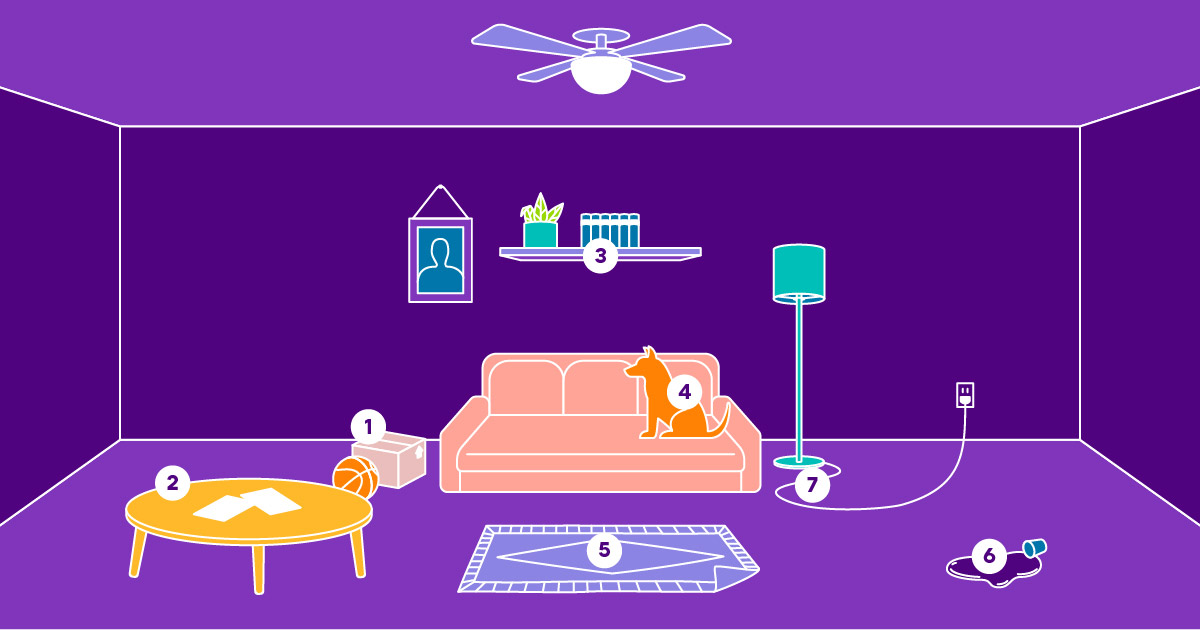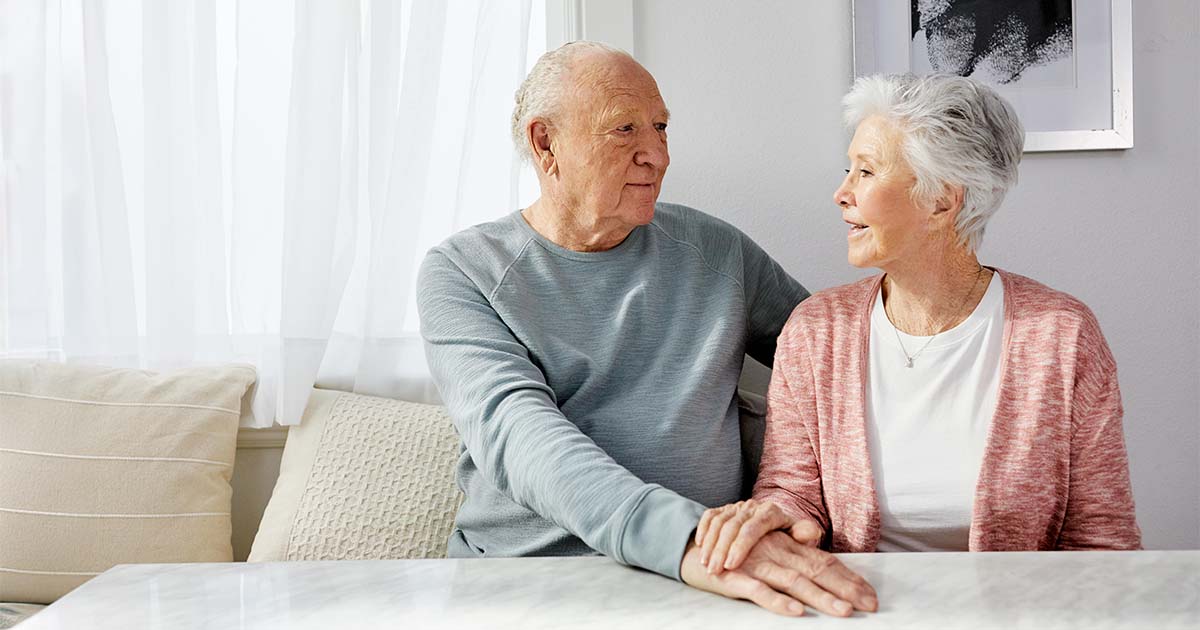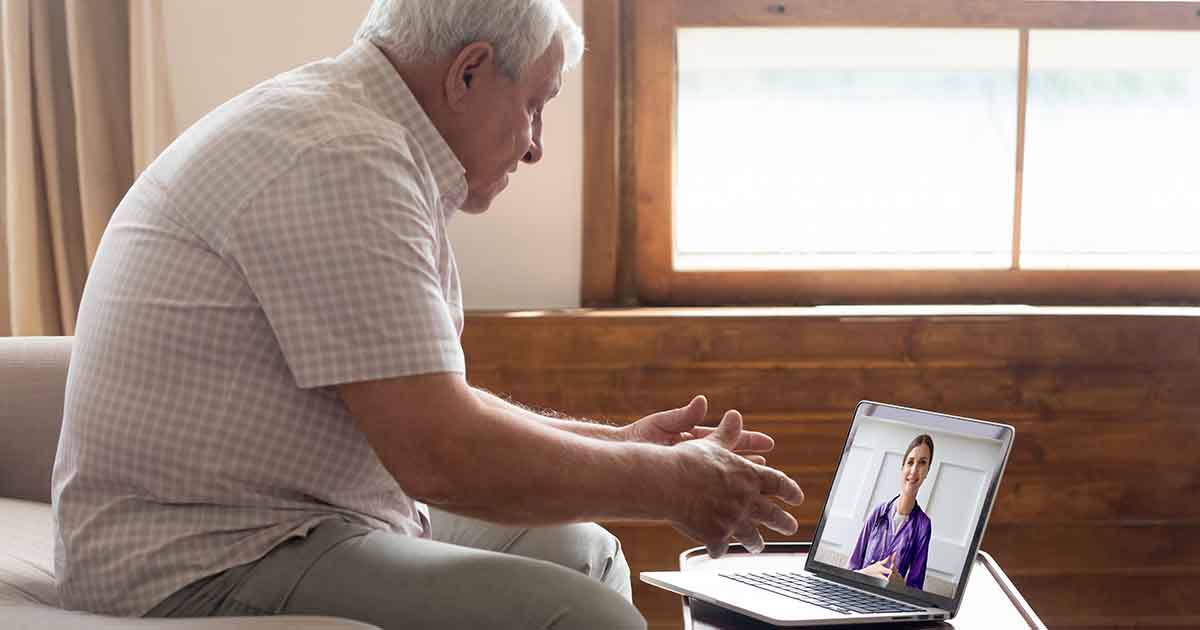There are many obstacles that may be considered fall risks in your home.
Whether it’s a yappy but lovable pup or the curled up edge of a carpet, every household has its fall hazards. However, as you age, these fall risks need much more attention.
According to the Centers for Disease Control and Prevention (CDC), one out of five falls cause a serious injury, and in older adults, those falls can become much more dangerous, often leading to a decline in health altogether.
“With older adults we are very concerned about a cycle of decline and debility that can arise from a fall, even one without injury,” said Bud Langham, Enhabit Home Health & Hospice’s executive vice president of clinical excellence and strategy. “Evidence shows a fall or near fall can lead to a fear of falling, which often leads to reduced activity, which of course leads to weakness and debility. This can lead to a downward spiral for older adults without proactive intervention.”
Know the fall risks in your home and how to avoid them
When a patient enters Enhabit’s home health services, the first visit includes a fall risk assessment. In addition to assessing the home environment, a clinician also considers medications and any physical and mental impairments that could lead to a fall.
Tests are also conducted to identify and isolate any specific problems that could contribute to fall risks.
“We screen for risk factors linked to an increased likelihood of falling, such as environmental barriers, visual impairments, cognitive impairments, as well as mobility and strength impairments,” Langham said. “Enhabit also leverages a robust library of standardized, validated tests and measures that help identify and isolate patient-specific problems that can contribute to fall risk.”
However, you don’t have to wait until you’ve entered into home health to reduce the risk of falling in your or a loved one’s home. Langham offers the following fall risks to be mindful of in and around the home:
- Small children
- Pets (large and small)
- Electrical cords
- Uneven floors
- Wet tile floors
- Areas rugs and other trip hazards
- Narrow paths and walkways
- Improper footwear
- Steps and stairs
- Outside surfaces
- Unsafe/unsecured rails
- Visual distortions (low light, low contrast floors and steps)
- Clutter and obstacles (toys, etc.)
- Unsafe devices (walkers, canes)
- Improperly sized devices
- Frequently used objects on high or low shelves
- Slippery tub or shower surfaces
Help reduce your fall risk with the following tips:
- Ask your doctor about taking vitamin D; it’s proven to improve bone and muscle health
- Get your eyes checked at least once a year and update eyewear when needed
- Do strength and balance exercises such as tai chi
- Add grab bars in the shower and next to the toilet
- Replace dim lightbulbs with brighter ones and make sure your home has lots of lighting
- Review all your medications – prescription and over-the-counter – with your doctor to see if they might make you dizzy or drowsy
Social Share
At Enhabit our patients are our number one priority. From providing the latest medical practices to building deep personal connections, we’re focused on upholding every patient’s dignity, humanity and sense of control on their healthcare journey.
Home health
Our home health services give patients access to the care they deserve in the comfort of their own homes. From disease and injury management to recovery from surgery, our clinicians help patients confidently achieve their healthcare goals.
Hospice care
Our hospice care services place importance on the comfort of every patient living with a terminal illness. Our caring professionals are dedicated to providing not just physical care, but spiritual and emotional support to every patient and their loved ones.

 Back to Resource library
Back to Resource library




